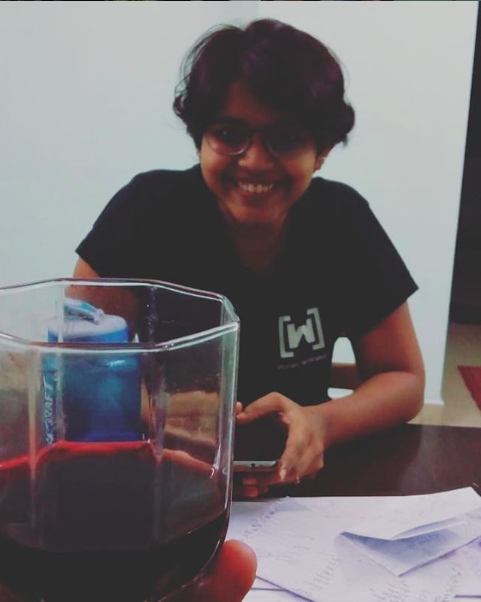On May 26, 2017, just about week after graduating from college, I started working full time at Rethink. Today marks my second work anniversary. This is more of a reflection post that summarises what I’ve been attempting to do in the last two years.
The problem / The purpose
There are tonnes of scholarship opportunities for engineering students today. Let’s take the WeTech Qualcomm Global Scholarship that offers 5000USD and 6 months of virtual mentorship to 18 female engineering students from India, the Venkat Panchapakesan Scholarship that selects 6 students from across India for an exposure trip to the YouTube HQ in California and awards them a grant of 1000 USD, or the GHCI Student Scholarship that offers 200 female engineering students the opportunity to travel to Bangalore and attend GHCI, Asia’s largest Women in Tech Conference.
These are all brilliant avenues for a student to pick up exposure and industry skills. Most students, despite being super smart and talented, don’t apply to these scholarships. Why? What can be done about it?
This has been the problem I’ve been working on for the last two years. I started out with the hypothesis that the reason students don’t apply to such scholarships is
- Lack of awareness — They don’t know about these opportunities exist and that they can / should make the most of them
- Lack of guidance — They don’t know how to go about the application process
- Lack of self-belief — They don’t think they’re good enough to apply / get selected
What followed was a series of experiments to understand the problem slightly deeper and figure out solutions. For most part, our efforts were focussed on students from Kerala, primarily because it was home turf and was a more specific niche to understand the problem deeper. Having said that, the programs, the resources and everything we did were open for anyone across India and although not deliberate, we did invite attention from students across the country.
Starting Out
The starting point for my efforts was facilitating advocacy and guidance around the GHCI and Venkat Panchapakesan scholarships. At the time I was starting out, there was hardly any precedent. This was such a new space — there was hardly any guidance around how to apply for such exposure scholarships.
One of the first interventions was facilitating guidance to Felix in applying to the Google Venkat Pachapakesan Scholarship. Neither of us knew much about the scholarship except that Prince Raju from MACE was a previous winner. (This was the basis of hope that should Felix be able to put in a quality application, he’d have a shot at getting selected). Felix then managed to successfully apply to the scholarship.
It was alongside this experiment that we started putting together a wiki page as well. I still very vividly remember the very first wiki edits I made 🙂
Soon after, we had an experiment to get 1000 girls from Kerala to apply for the GHCI scholarship. It was in this process that I started writing guidance blogs, facilitating guidance over email and bringing previous scholarship winners for FB live sessions. Eventually, we discovered about 1200 students from across 22 colleges in Kerala and about 250 of them applied to the GHCI scholarship.
What was interesting here is that none of the students we reached out to knew about the GHCI scholarship. They had absolutely no clue that something like this even existed. The good thing though is that they were interested and willing to work with us to put in an application.
My biggest realisation here was the dire need for awareness and advocacy as to why students must pursue these.
Experiments
The opportunity wiki evolved to be a solution for the guidance problem. We started creating a wiki page for each scholarship and each of these pages covered basic information about the scholarship, application resources / guidance. However, the most interesting section in the wiki is the previous winners section which contains the names of previous beneficiaries of the scholarship along with their interviews and winning applications.
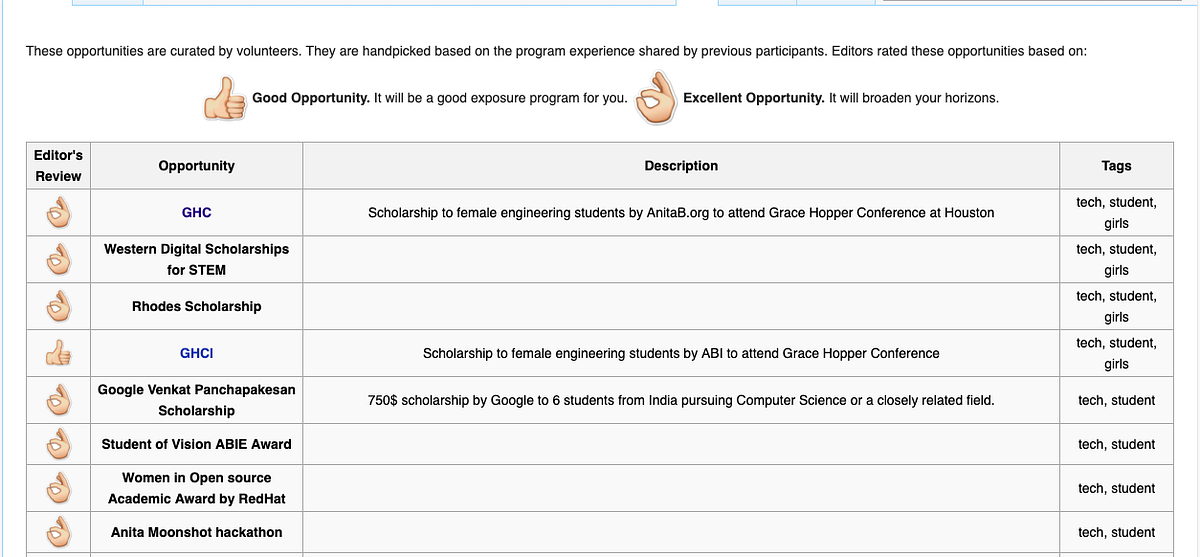
When each new opportunity opened up, we ran specific advocacy and guidance programs, each time documenting all relevant guidance and insights in the wiki.
By end of 2017, we received some great news!
42 of the 200 GHCI student scholars selected were from our collective.
Felix was one among the 6 students to be selected for the Venkat Scholarship in 2017.
Not only did this prove that we had some really smart students in the state, but also that these online models of facilitating advocacy and guidance were working.
We went on to build an audience of over 7000+ engineering students across Kerala in the months that followed. Effort was to deliberately set in place an email communication system through which we could reliably reach the students. We also had our v@r system to answer questions that students had — v@r is an email address to which anyone could write in with any question they had and we’d respond to them. By now, we’ve addressed over 10,000+ queries over email.
After about a year into operation, we happened to note that we had captured sufficient base to start building on top of. Instead of running 10 separate guidance programs to equip students to apply to scholarships, we decided to converge our guidance and capability building program into a single learning program. We started our with female engineering students as our primary audience and built the WIT Learning Program.
The WIT Learning Program was 4 weeks long and covered basic 21C skills required to leverage these opportunities and also generally do well in their careers. The first cohort had 23 graduates. These students then went on to co-run a WITx program in their respective colleges which is a shorter, 2-week version of the program. We also worked with AnitaB.Org and the Muthoot Foundation in offering GHCI scholarships to top performers in the program.
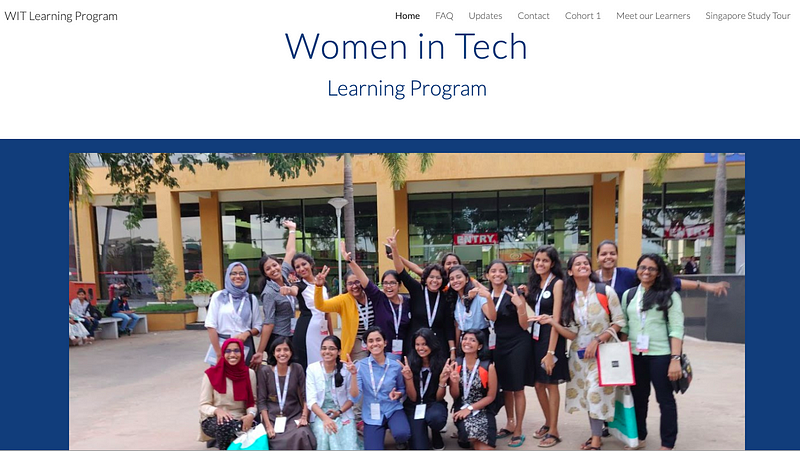
Bringing about a cultural shift
What’s fantastic is that there has come about a culture of leveraging opportunities.
When I started out, guidance on applying to scholarships hardly existed amongst the engineering student audience in Kerala. The students hardly knew that such opportunities existed. As a result of these efforts, we now have an audience of 7000+ students across Kerala who have collectively applied to opportunities worth INR 6 Crores and secured opportunities worth INR 1 Crore.
In 2017, we had no WTM scholars from Kerala. We had no GHC scholars from Kerala either. Last year, we had 4 WTM scholars from Kerala and 1 GHC Scholar. This year, we have about 100 girls who applied for the GHC Scholarship.
I now see students actively discuss how they can make the most of these opportunities in their local college communities. More importantly, I see the recipients of these scholarships paying forward all their learning and supporting their peers.
In one of our discussions, we were envisioning how an ideal outcome of these efforts would look like. SKG used to then say that if we do our part well, we wouldn’t have to exist hereafter. And now that I see our audience self organise to help each other out in leveraging opportunities, I’m happy that they no longer need me to actively send those reminder mails. I’m happy that they have equipped themselves to figure it out.
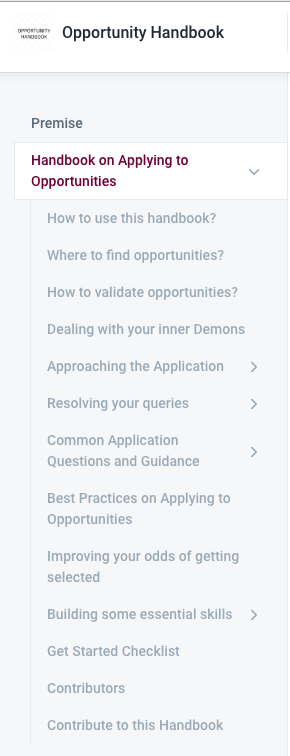
Some other outcomes:
- 100+ curated opportunities in the wiki.
- 105 learning program graduates.
- 1000+ hours of videos and guidance calls
- In the course of 2 years, I managed to write over 250 blogs — short and long, covering resources, hacks, experiences, guidance and advocacy. I eventually converged all the guidance into an opportunity handbook.
What has been my key learning?
Opportunity Gap is real. Everyone should have equal access to opportunities and the youth of today must be equipped to be ‘Opportunity Literate’ — To be able to discover, validate and leverage opportunities in the 21st century. The desire to secure opportunities serves as an extrinsic motivation and nudges them to do whatever required to make it happen. By means of acquiring this skill alone, they are well positioned to progress in their careers professionally.
Given my learning so far, I think three areas of importance exist in the talent development space:
- 21C skills literacy and ability to navigate ones own career— It is surprising how much potential all these students have and yet how they lack in some of the most basic, fundamental skills. While there is a need for a just in time guidance system, I think it is sustainable and reasonable to rather invest time in equipping students to figure it out for themselves. Equipping the student with basic 21C skills and the ability to utilise resources to navigate her own career and professional growth is any day better than spoon-feeding. The responsibility of ensuring ones own professional growth has to be that of the individual and not any institution.
- Encouragement — One of my biggest learnings has been the impact our environment has on us. We just need more people telling our youth they can and will do well in life. This is where I see setting up scholarships making most sense. When you offer a student a scholarship, beyond the money and the mentorship, you are investing in her talent and telling her, “Yes, you’re talented. I believe in you. Now make it big”. It needn’t be scholarships alone — People taking out time for each other is also a signal that they wish to invest in the talent. Office Hours / Coaching properties where people invest time in grooming talent is encouraging her.
- Exposure — If there’s only one thing we can bridge, it should perhaps be exposure. To step out of the world we know and explore what lies beyond — Meeting people who’ve done well, going places, involving in unfamiliar experiences and pursuing opportunities foreign to us. These are only few ways through which we broaden our knowledge and perceptions about the world. Each time I step out of my known zone, it’s been a ‘Welcome to the real world’ experience and it has only broadened ‘my world’ and equipped me to be stronger in dealing with it. Anything that enables our youth to obtain better exposure — Having access to productive resources and tools (laptop/ internet), travelling to a conference, doing an internship, working with an industry professional on a project, putting themselves out there through blogs/vlogs, attempting to doing something on their own, pursuing opportunities — must be encouraged. When they go out there and see that this is all there is and it is all doable, that their aspirations are achievable, there’s a higher chance that they actually go on to pursue their lofty audacious aspirations. Or even cultivate more audacious aspirations for themselves 🙂
While our educational institutions can most certainly up their game, everyone else on the sidelines can and should step up to do their bit. That is the only possible option for us to sustain our efforts and keep the momentum going. Expecting a single university or institution to cater to all needs of the youth and do it all is irrational. Wherever possible, we can all contribute — in cash, in kind, in encouragement.
Why I do what I do
When I graduated from college, I wanted ‘purpose’ and ‘learning’ to be at the centre of my career choice. I found both in abundance in the last two years.I’m glad to have gotten to work on a meaningful problem alongside some really smart, committed people. I’m glad that I could play a role in the lives of all those students we worked with.
In the process of enabling thousands of students to believe in their own abilities and take action towards realising their aspirations, my own self belief has grown stronger.
When I started out, I was asked what my personal aspiration was and at the time, I hesitated to even acknowledge that I aspire to study in a world class educational institution. Stanford was on my mind and I couldn’t even muster courage to acknowledge to myself that I aspired to go study there someday. I recently visited Stanford, attended an MBA class there and spoke to few current students. But when I did all this, I did not find hesitation or fear anymore. I was expecting to have a fangirl moment, jumping around thinking I even saw Stanford. But I was way more grounded and just felt, ‘Okay, so this is Stanford. It’s nice”.
This experience got me to wonder if I’m not dreaming big enough now. It’s like my canvas just got bigger. I think my share of experiences, particularly in the last two years have made a stronger case for me to invest in myself and get myself to do more good work. To aspire for even bigger goals and trust in my own ability to figure it out.
It is now time to go back to the drawing board and figure out the next phase of growth.
Some glimpses from last 2 years
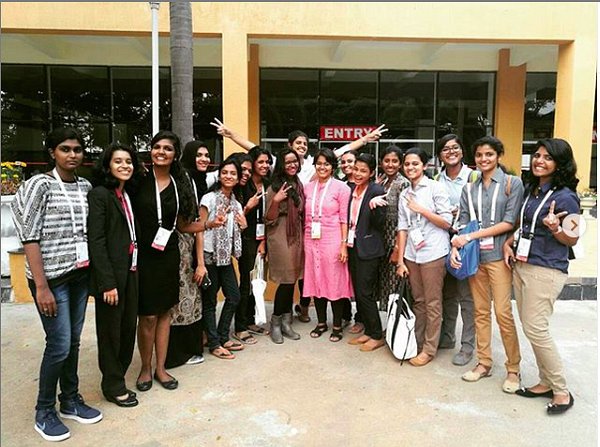
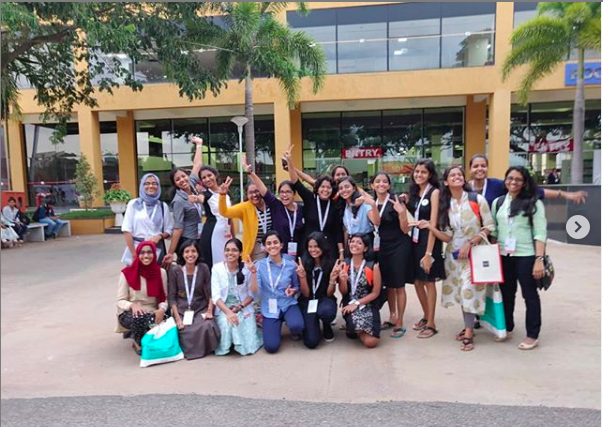
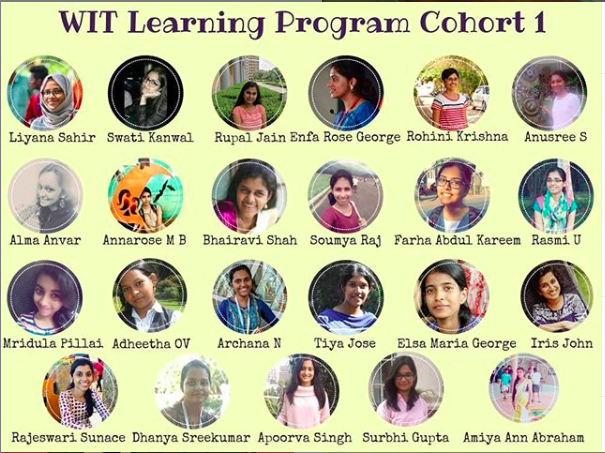
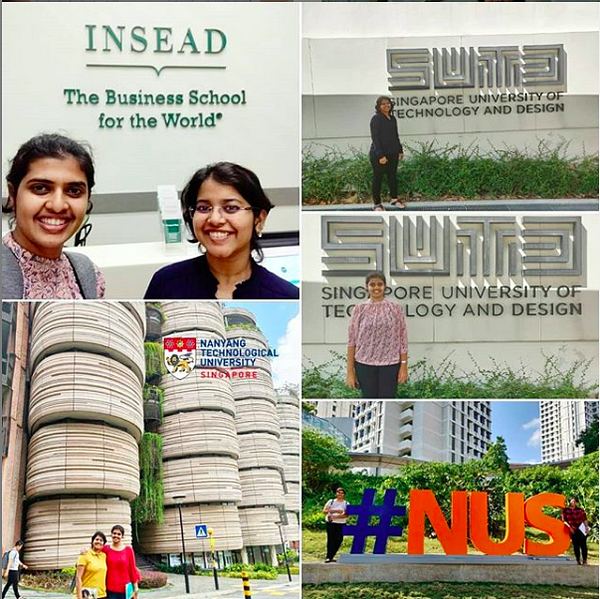
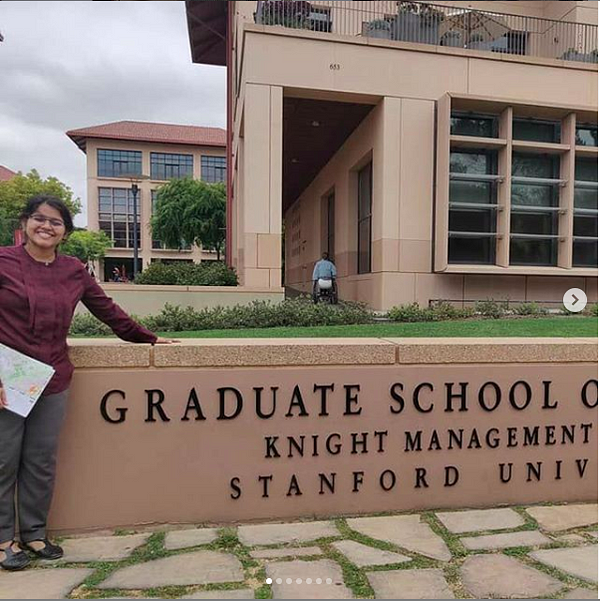
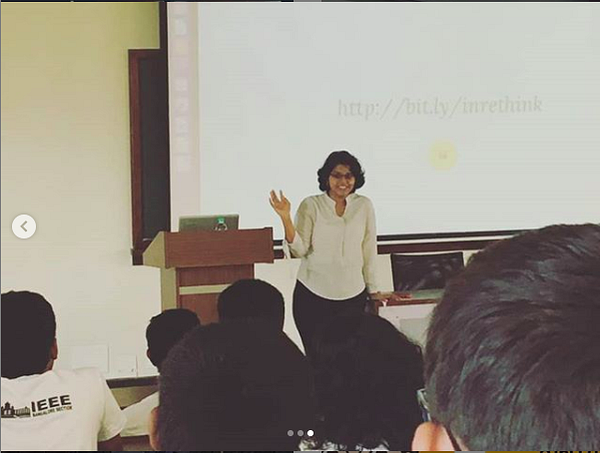
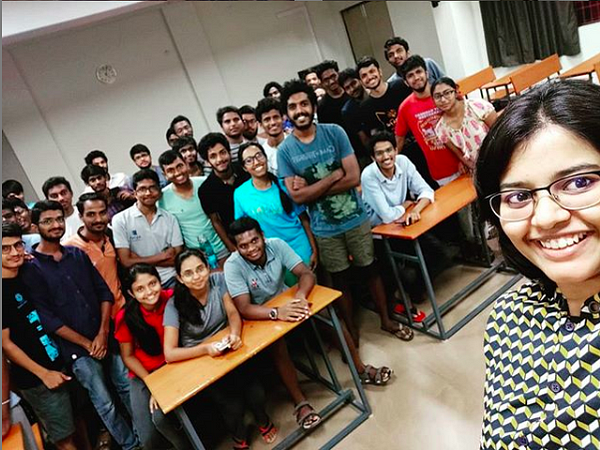
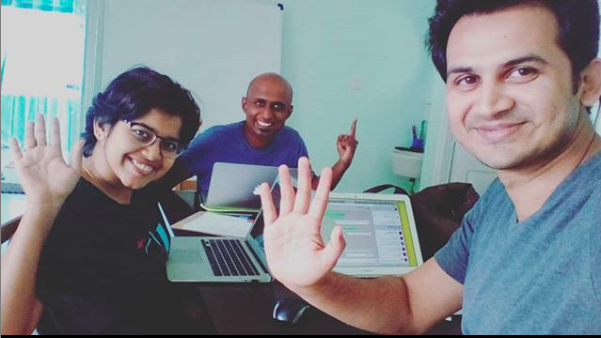
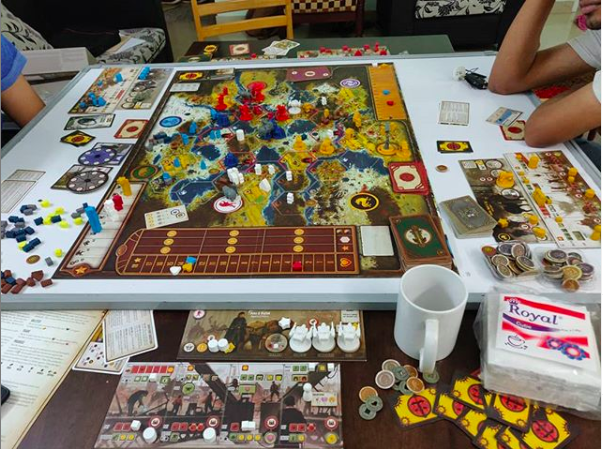
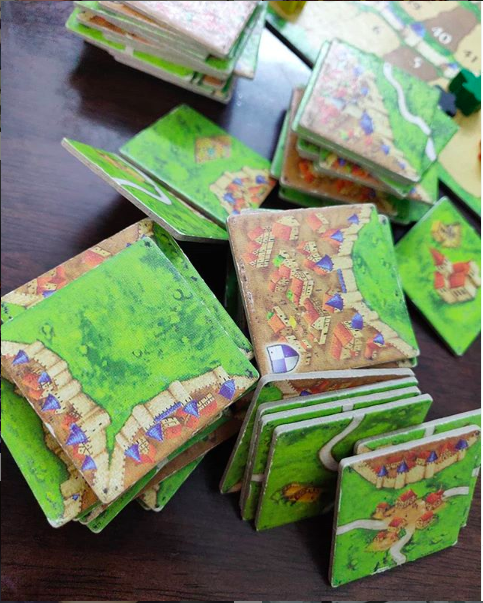
That pretty much summarises most of it. Actually all of thr above, few 100 cups of coffee and celebrating the good work sums it up!
